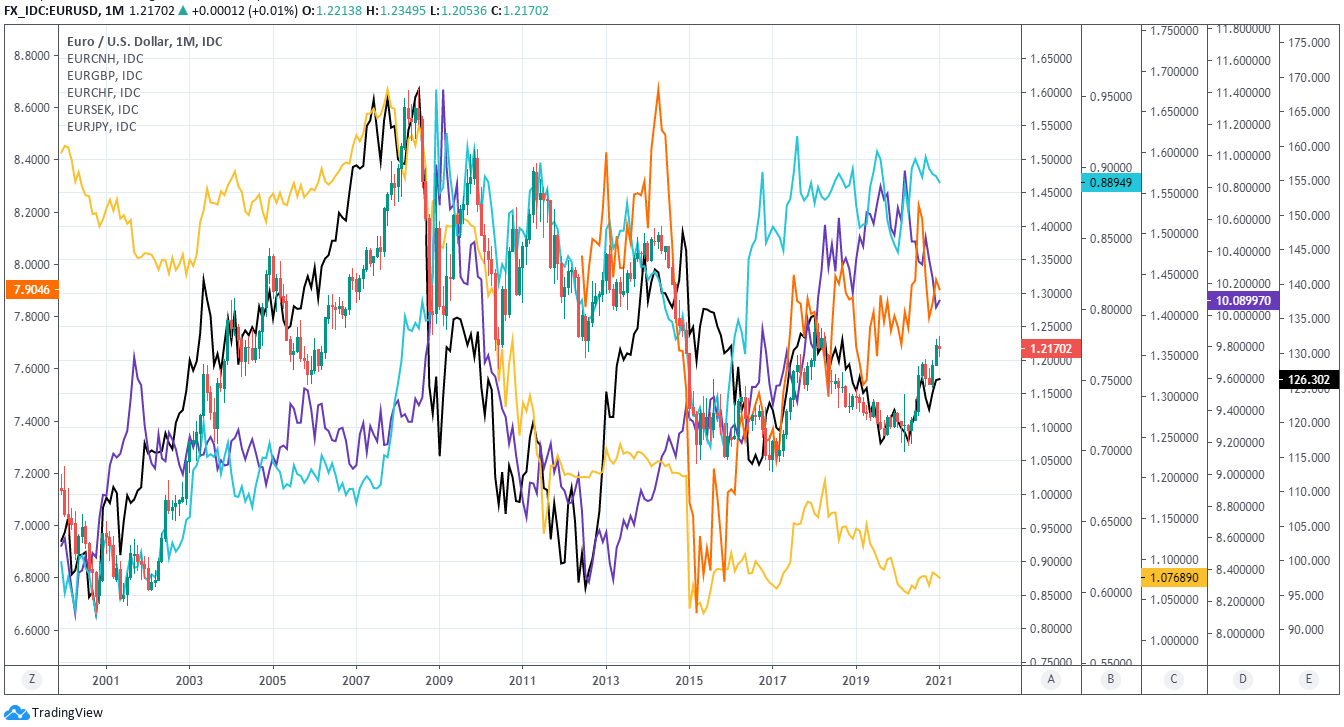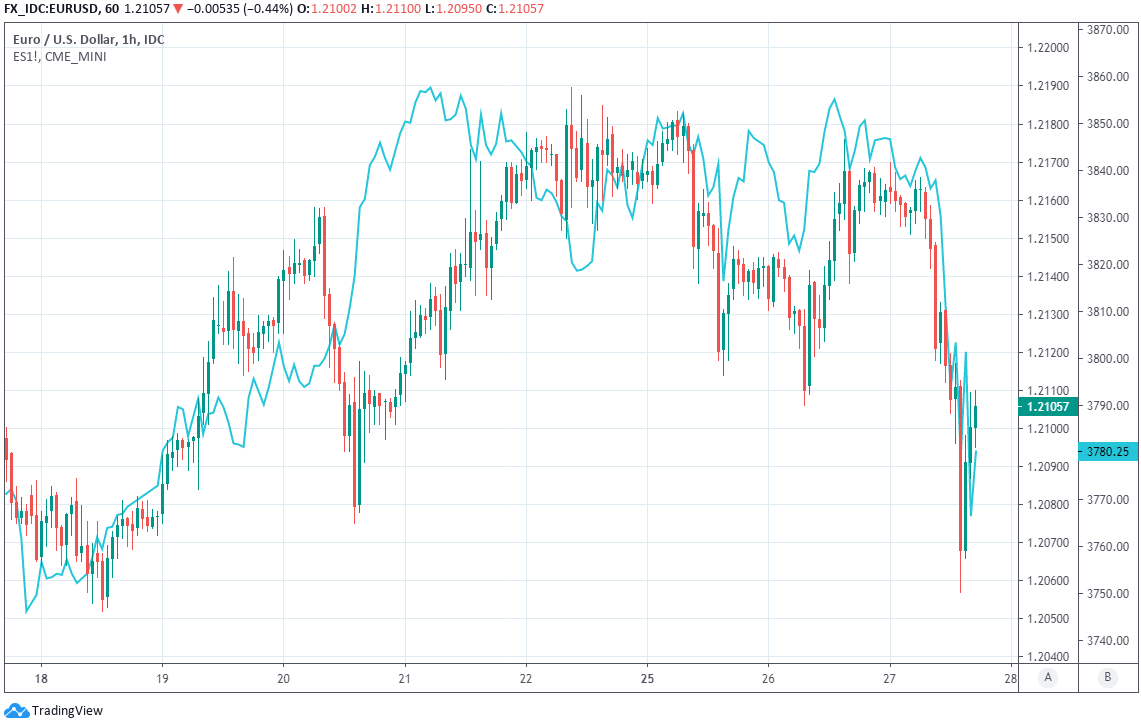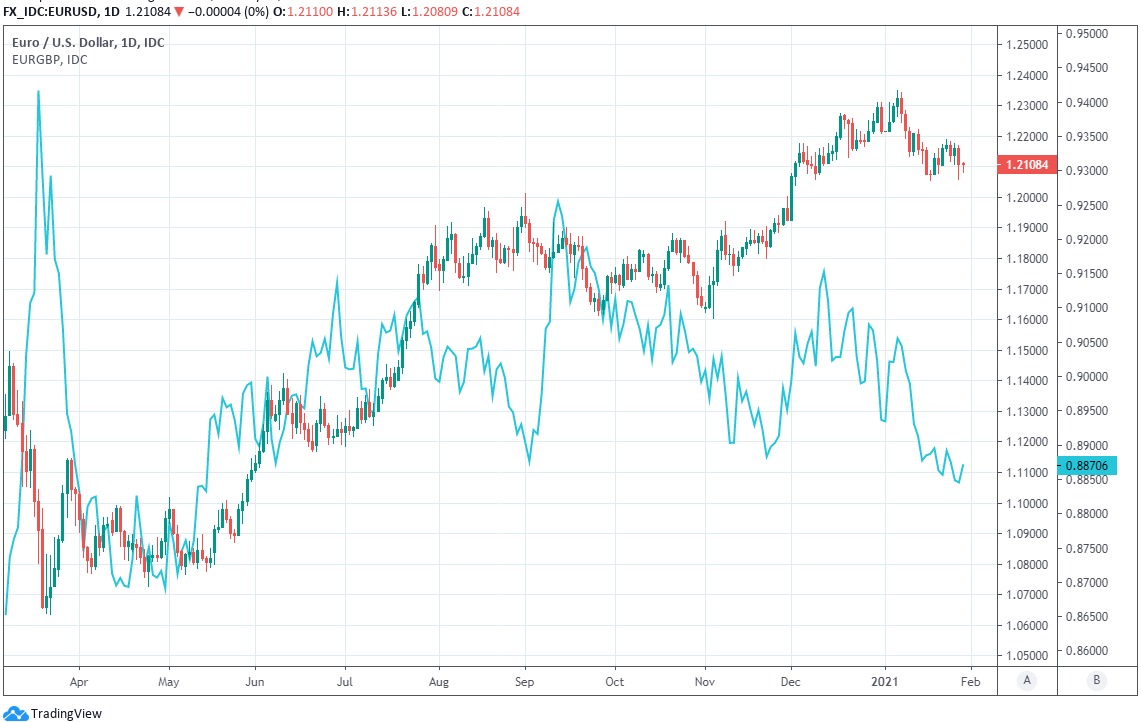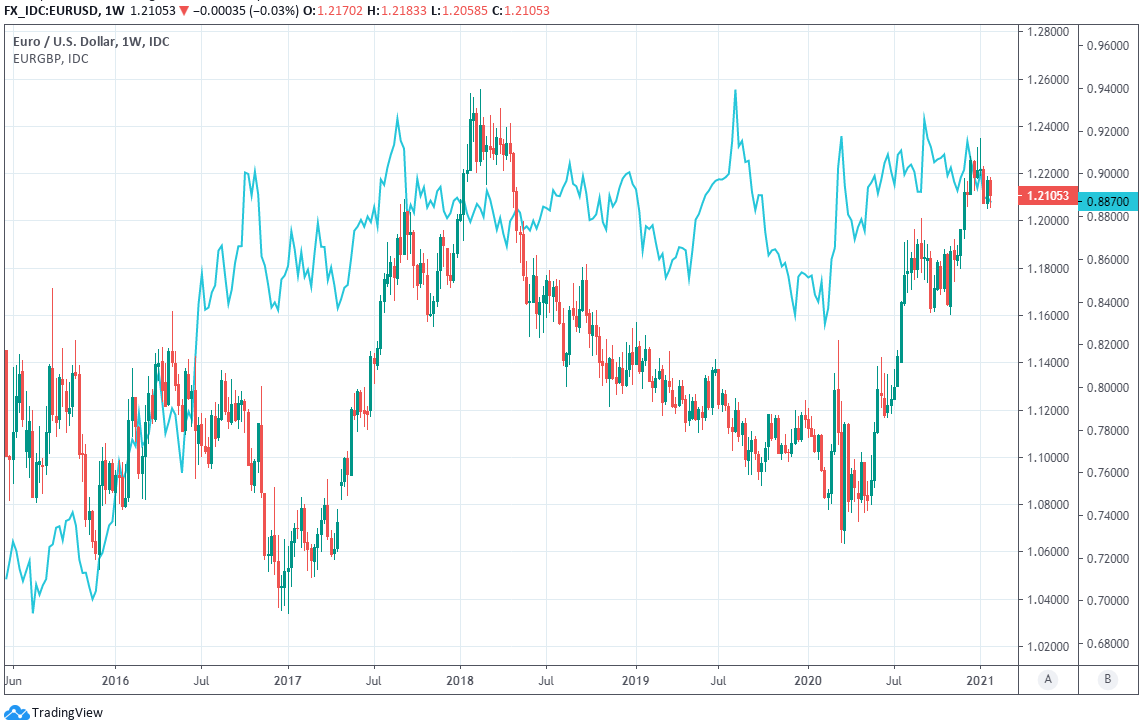Euro-Dollar Facing ECB Handicap as FX Concerns Dominate Outlook
- Written by: James Skinner

Commerzbank HQ looms over the Frankfurt skyline. Image © Andre Douque, reproduced under CC licensing conditions
- EUR/USD spot rate at time of writing: 1.2140
- Bank transfer rate (indicative guide): 1.1692-1.1777
- FX specialist providers (indicative guide): 1.1934-1.2031
- More information on FX specialist rates here
The Euro-to-Dollar exchange rate remained on the defensive early on Thursday following the latest indication that European Central Bank (ECB) concerns about recent increases in European exchange rates are escalating, which could act as a headwind to further gains by the single currency in the short-term.
Europe's single currency saw earlier losses exacerbated on Wednesday when Bloomberg News reported that ECB officials believe investors are underestimating the odds of an interest rate cut in the months ahead and have agreed to stress at future meetings that one is a viable option for the bank.
This is after the same outlet cited unnamed officials on Tuesday for another report claiming the ECB is investigating whether differences between European and U.S. monetary policies could explain the 10% gain wracked up by EUR/USD during the year to Wednesday.
"This is very interesting in the light of comments from DNB President Klaas Knot (traditionally one of the more hawkish members of the Council) who signalled the possibility of a rate cut to curb euro strength earlier," says Nick Kounis, head of research at ABN Amro. "We judge that the ECB wants to keep the door open, and indeed some market pricing of rate cut, as a way to restrain further euro strength going forward. Having said that, the ECB may be playing a dangerous game if it is not serious about delivering."
EUR/USD's rally has given a powerful uplift to various measures of the trade-weighted Euro, which has maginified increases already prompted by earlier gains over the Chinese Yuan and Pound Sterling. Together those three currencies comrpise 52% of Europe's trade-weighted exchange rate.
Above: Euro-to-Dollar rate shown at hourly intervals alongside S&P 500 index futures (blue).
Exchange rate gains have been mostly the result of moves in other currrencies but are cheapening the cost of goods imported into Europe at a time when inflation is already below zero and after the ECB has missed its "close to, but below 2%" target for years.
The latest set of remarks is all the more pertinent because it comes after a weeks-long correction that pulled the Euro-to-Dollar rate back from 1.2350 and its highest level since early 2018, which had the effect of also pulling the trade-weighted measures of the single currency lower too.
{wbamp-hide start} {wbamp-hide end}{wbamp-show start}{wbamp-show end}
"This could be viewed in itself as a EUR negative as it underlines once again the emphasis on the exchange rate in monetary policy decision-making. However, you could also argue (this would be our take) that the ECB is forward looking and seeing the potential for further EUR/USD appreciation and are thus trying to plan ahead about potentially arresting excessive gains," says Derek Halpenny, head of research, global markets EMEA and international securities at MUFG.
The currency market had been sanguine about the risks posed to the Euro-Dollar outlook by the European Central Bank's exchange rate concerns, more so after the bank almost overlooked the currency in last week's policy decision.
Above: Euro-to-Dollar rate shown at daily intervals alongside EUR/GBP index futures (blue).
Last week the bank said little about the Euro and instead suggested to markets that it may not after all use all of the €1.85 trillion allocated to its coronavirus-inspired quantitative easing programme, which had provided the single currency with a lift into last weekend.
ABN Amro's Kounis, MUFG's Halpenny and others see this week's remarks as being motivated more by fears of what might yet happen to the Euro exchange rates than any moves seen in the them so far, with the ECB potentially seeing the threat of an interest rate cut as a good tool for keeping appreciation pressures at bay. But regardless of whether its recent or anticipated moves that are at the top of mind for the ECB, exchange rate movements are clearly of greater concern to the bank than it had let on last week and more so than financial markets were given credit for and now they could be set to act as a lasting constraint on the single currency.
{wbamp-hide start} {wbamp-hide end}{wbamp-show start}{wbamp-show end}
"Policy rates can be reduced further if needed, but the prevailing market view, and our own, is that the side effects of such move would outweigh any benefit," says Roberto Mialich, a strategist at UniCredit Bank "We do not think this step up in rhetoric points to rate action, at least in the near term. Rather, it is probably an attempt to preemptively put a cap on euro appreciation."
ECB concerns are a potentially bearish development for EUR/GBP and a bullish factor for the Pound-to-Euro rate. GBP/EUR accounts for 15% of the trade-weighted Euro and is close to long-term lows following Brexit, but may soon benefit from a faster vaccine rollout than is seen in Europe this year.
Above: Euro-to-Dollar rate shown at weekly intervals alongside EUR/GBP index futures (blue).
Sterling could turn the tables on the Euro and help reduce the latter's trade-weighted exchange rate if the UK economy gets a headstart in any recovery after leading the field on vaccinations. It's one of the few currencies with a significant enough weighting to offset for the trade-weighted Euro any further upward moves in EUR/USD.
The only other currency with enough sway over the index is the Chinese Yuan, but with this rising 7% in the last year already, it may have less scope than Sterling to gain further in the short-term. In the absence of further gains for one of these currencies, or an outright decline in EUR/USD, the market faces a potentially lengthy period of ECB threats to cut its already-negative deposit interest rate further below its current -0.50% level.
"EUR/USD held up fairly well and is still around the 1.2100 level. The ECB comments may delay, but not derail EUR/USD strength this year as USD stays soft throughout 2021," says Petr Krpata, chief EMEA strategist for currencies and interest rates at ING. "We look for further EUR/GBP decline over the course of the year as the UK vaccination advantage (and its likely earlier recovery) and GBP undervaluation vs EUR are to benefit sterling."
Above: EUR/USD and other major euro rates at monthly intervals. Click image for closer inspection.







